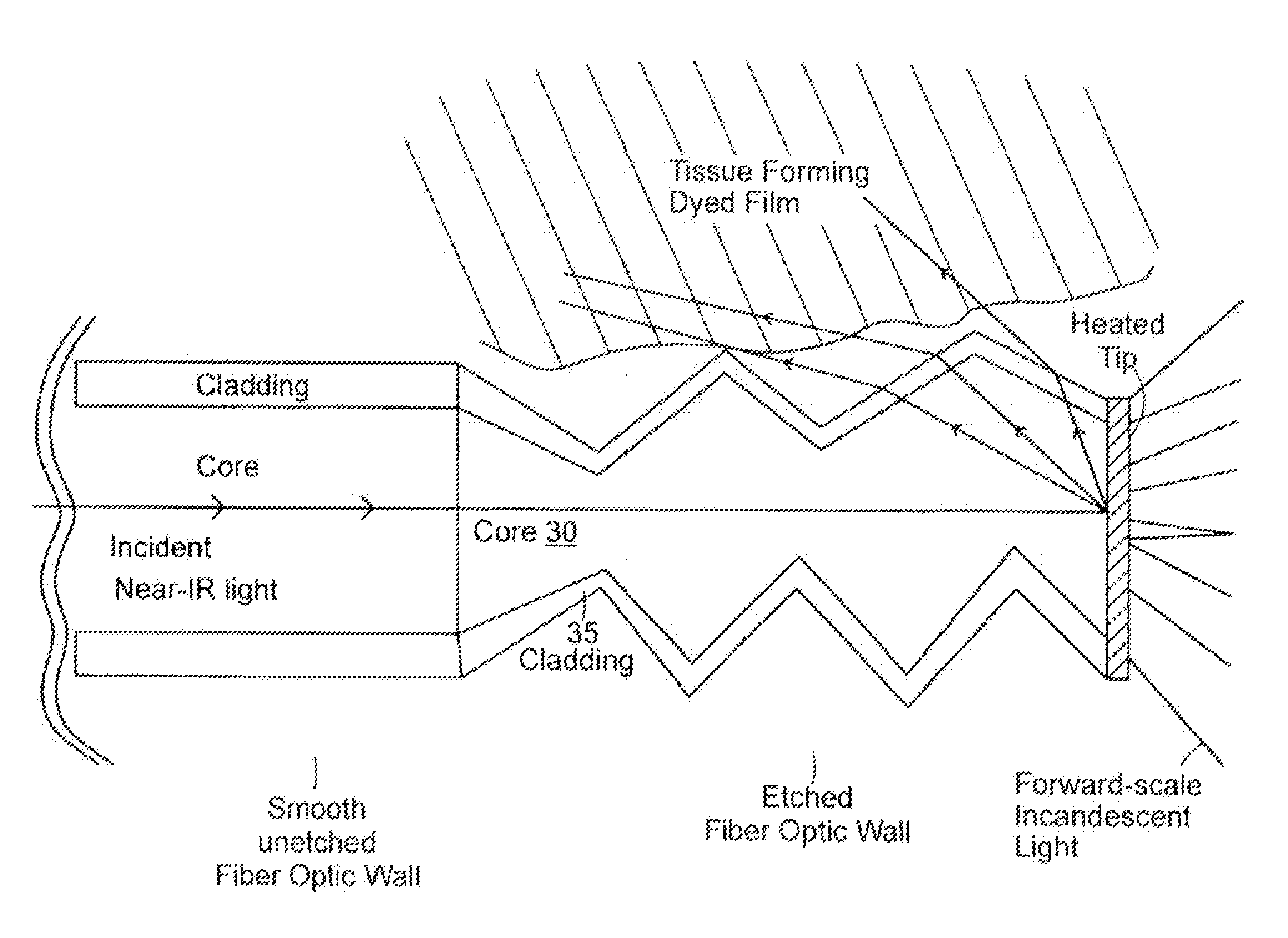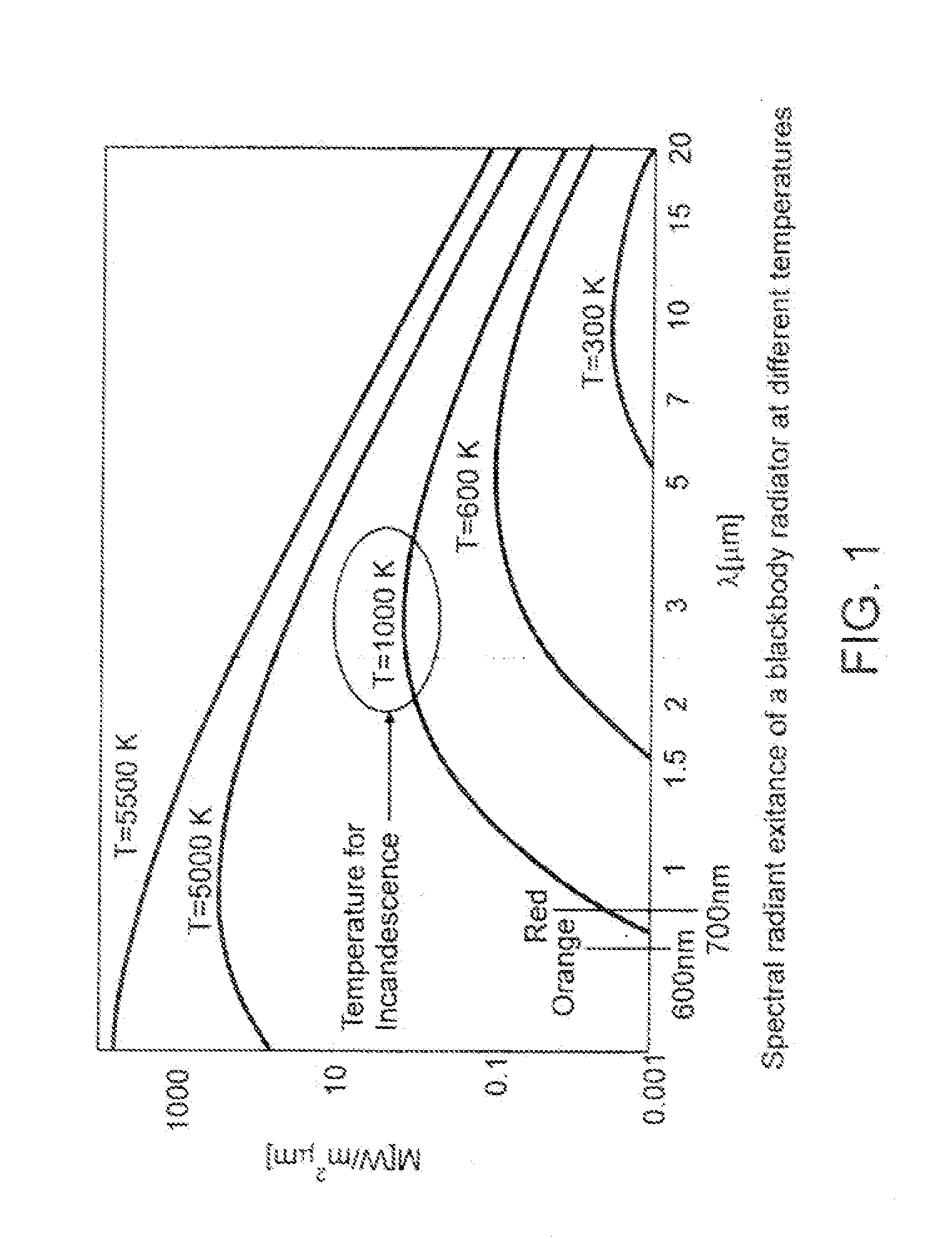Use of secondary optical emission as a novel biofilm targeting technology
a biofilm and secondary optical emission technology, applied in boring tools, dental tools, radiation therapy, etc., can solve the problems of limiting the space available for bacterial growth, affecting the health of patients, and affecting the treatment effect of patients, so as to achieve safe and more predictable process, the effect of reducing the risk of infection
- Summary
- Abstract
- Description
- Claims
- Application Information
AI Technical Summary
Benefits of technology
Problems solved by technology
Method used
Image
Examples
example 1
Treatment of a Recalcitrant 10 Mm Periodontal Pocket
[0090]Presented as a healthy 24 year old with a recalcitrant 10 mm periodontal pocket on the facial aspect of the maxillary canine (tooth #6) after a regular dental cleaning and scaling. In a minimally invasive procedure, the patient was anesthetized with xylocaine, and the periodontal pocket was infused with 0.1% MB solution via a small bristled brush that easily fits into the volume of the pocket. The MB solution was left for approximately 2 minutes in the area, and then surface irrigation of H2O was applied.
[0091]A 600 nm silica fiber connected to a 830 nm dental diode laser (sold by Lumenis Technologies, Yokneam, Israel) was then activated at 1000 mW and the fiber was placed into the periodontal pocket, where it immediately came in contact with biofilm, tissue, and blood products. The tip of the fiber immediately carbonized, and became incandescent. The fiber (with the secondary quantum emissions emanating from the carbonized t...
example 2
Treatment of Infected Periimplant Tissue
[0093]Presented as a brittle diabetic with an infected titanium implant and a fistula draining the infection. Radiographic appearance detailed 8 mm of lost bone, and generalized radiolucency around the medial half of the implant. Three different antibiotic regimens failed to cure the patient of the infection. The area was surgically opened with a conventional trapezoidal shaped flap, and the infection and biofilm effected area was bathed in a 0.1% MB solution (sold by Vista Dental Products, Racine, Wis.) for approximately 2 minutes. The area was then irrigated with copious H2O, leaving the targeted biofilm behind, and washing away excess stain. A 600 nm silica fiber connected to an 830 nm dental diode laser was then activated at 1200 mW and the fiber was placed in contact with biofilm and blood products and immediately carbonized. The fiber, with the secondary quantum emissions emanating from the carbonized tip were then moved around the near ...
PUM
 Login to View More
Login to View More Abstract
Description
Claims
Application Information
 Login to View More
Login to View More - R&D
- Intellectual Property
- Life Sciences
- Materials
- Tech Scout
- Unparalleled Data Quality
- Higher Quality Content
- 60% Fewer Hallucinations
Browse by: Latest US Patents, China's latest patents, Technical Efficacy Thesaurus, Application Domain, Technology Topic, Popular Technical Reports.
© 2025 PatSnap. All rights reserved.Legal|Privacy policy|Modern Slavery Act Transparency Statement|Sitemap|About US| Contact US: help@patsnap.com



